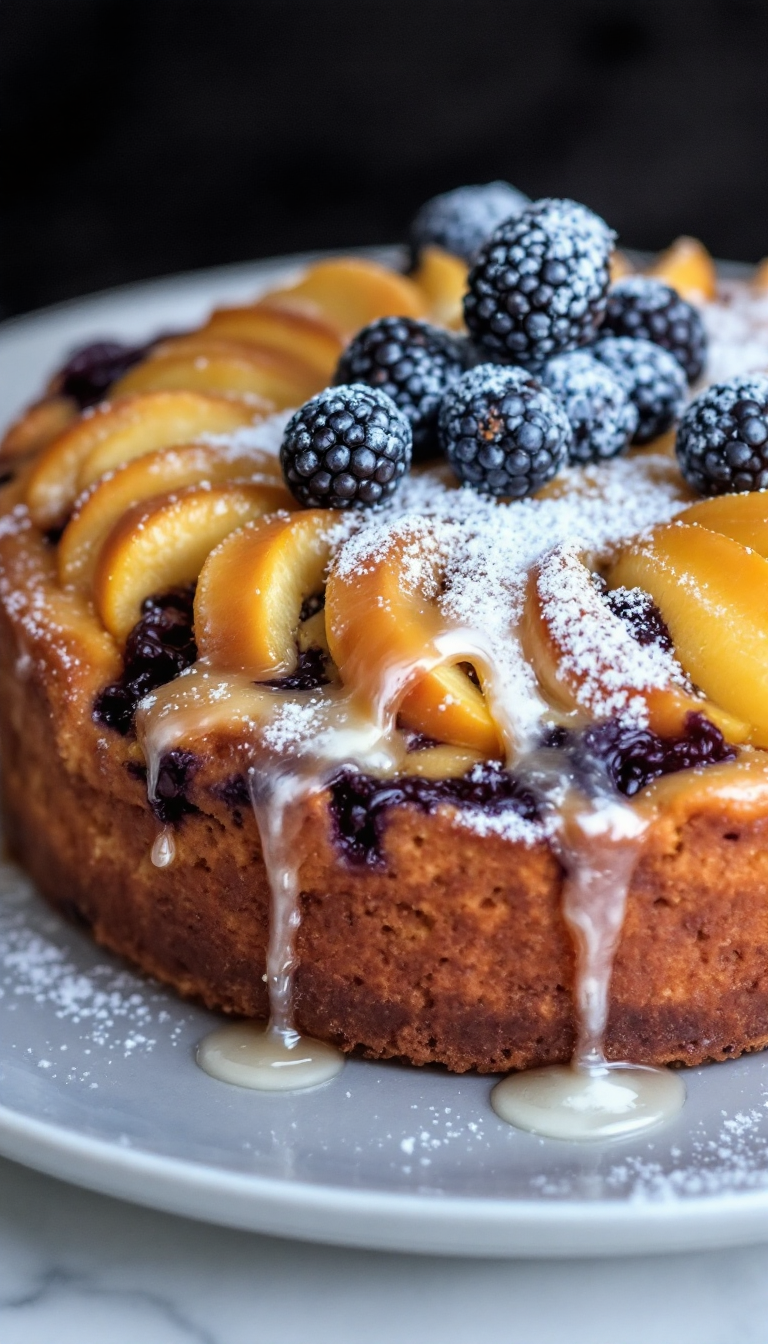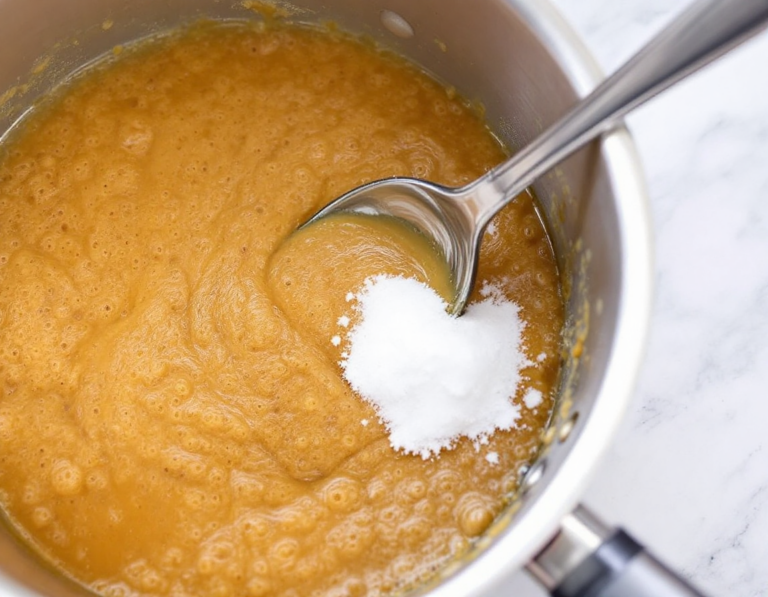If you’re on the hunt for a cake that’s both delicious and a bit different, this Moist Prune Honey Cake might be just what you need. With its rich flavors and tender texture, it’s a delightful treat for any occasion. The natural sweetness of prunes and honey creates a perfect balance, making each bite a little taste of comfort. It’s easy to make and sure to impress your family and friends with its inviting aroma and unique taste.
Steps
- Prepare two 9-inch cake pans by buttering them and lining the bottoms with parchment paper. Preheat your oven to 325°F.
- In a stand mixer, whisk 6 large eggs with 1 cup of sugar on high speed for about 5 minutes.
- Heat 5 tablespoons of honey in a saucepan over medium heat until very hot but not boiling (around 125°F). Stir continuously as you add 2 teaspoons of baking soda until the mixture turns a light caramel color, then remove from heat immediately.
- With the mixer still on high, slowly integrate the hot honey into the egg mixture, one tablespoon at a time, to avoid cooking the eggs. Do not let the honey cool down, as it will become too hard to mix.
- Lower the mixer speed to medium-low and incorporate flour one cup at a time, ensuring the flour is well mixed by scraping down the bowl with a spatula.
- Once the flour is fully incorporated, divide the batter evenly between the two prepared pans. Bake at 325°F for 25 to 28 minutes, or until a toothpick inserted into the center comes out clean, then allow the cakes to cool completely on a wire rack.
- For the frosting, whip 1 cup of heavy cream until it becomes stiff and spreadable, approximately 1-2 minutes on high speed.
- In another bowl, mix 32 ounces of sour cream with 2 cups of powdered sugar, then gently fold in the whipped cream. Refrigerate the frosting until you’re ready to use it.
- Once cooled to room temperature, slice each cake layer in half and stack them to prevent drying out.
- On a serving platter, assemble the cake by layering: a cake layer, a layer of frosting, a third of the chopped prunes, and a thin layer of frosting on the bottom of the next cake layer. Repeat the process until all layers are assembled.
- Coat the outside and sides of the cake with frosting, then embellish with piped melted chocolate, chocolate shavings, and additional prunes. For an artistic touch, create a checkerboard pattern with the melted chocolate.
Ingredients
- 6 large eggs, at room temperature
- 1 cup granulated white sugar
- 2 cups all-purpose flour, properly measured
- 5 tablespoons honey
- 2 teaspoons baking soda
- 32 ounces sour cream
- 2 cups powdered sugar
- 1 cup heavy whipping cream
- 1 1/2 cups chopped prunes
- Melting chocolate or chocolate chips for decoration
- Chocolate block for shavings
FAQ
- What is the unique chemical reaction in the Prune Honey Cake?
- The cake features a fascinating reaction between honey and baking soda. When honey is heated and combined with baking soda, it turns a yellow/light caramel color, creating a unique texture and flavor in the cake.
- Can I use regular all-purpose flour instead of unbleached flour?
- Yes, you can use regular all-purpose flour, but the recipe specifically calls for unbleached flour to maintain the intended texture and color of the cake.
- How should I incorporate the hot honey mixture into the egg mixture without cooking the eggs?
- Add the hot honey mixture to the egg mixture gradually, about 1 tablespoon at a time, while keeping the mixer on high speed. This prevents the eggs from cooking and ensures a smooth blend.
- How long should I bake the cake layers, and at what temperature?
- The cake layers should be baked at 325°F for 25-28 minutes, until they are golden brown and a toothpick inserted into the center comes out clean.
- When is the best time to eat the Prune Honey Cake for optimal flavor?
- For the best taste and texture, it’s recommended to eat the cake the day after it’s made. This allows the layers and prunes to soften and blend with the sour cream frosting.
Tips
- When preparing the honey mixture, ensure you do not leave it unattended as it heats. The transition to a light caramel color happens quickly, and if it becomes too dark, it may affect the cake’s flavor and texture.
- When adding the hot honey to the egg mixture, do so gradually, about a tablespoon at a time. This helps prevent the eggs from cooking due to the heat. Additionally, avoid letting the honey cool before mixing, as it will harden and become difficult to incorporate.
- To maintain moisture in the cake layers after slicing them in half, keep them stacked until you’re ready to assemble the cake. This prevents them from drying out.
- For best results, prepare the cake a day in advance. This allows the layers and prunes to absorb the frosting, enhancing the cake’s texture and flavor.
Equipment
- Electric Stand Mixer – Essential for beating eggs and sugar at high speed and mixing the batter.
- 9-inch Cake Pans – Required for baking the cake layers.
- Parchment Paper – Used to line the cake pans.
- Wire Cooling Rack – Used to cool the cake layers evenly after baking.
- Spatula – For scraping down the mixing bowl and spreading frosting.
- Saucepan – Needed for heating the honey for the chemical reaction with baking soda.
- Candy Thermometer – Useful for ensuring the honey reaches the correct temperature (about 125?F).
- Piping Bag with Tips – For decorating the cake with melted chocolate in a checkerboard design.


